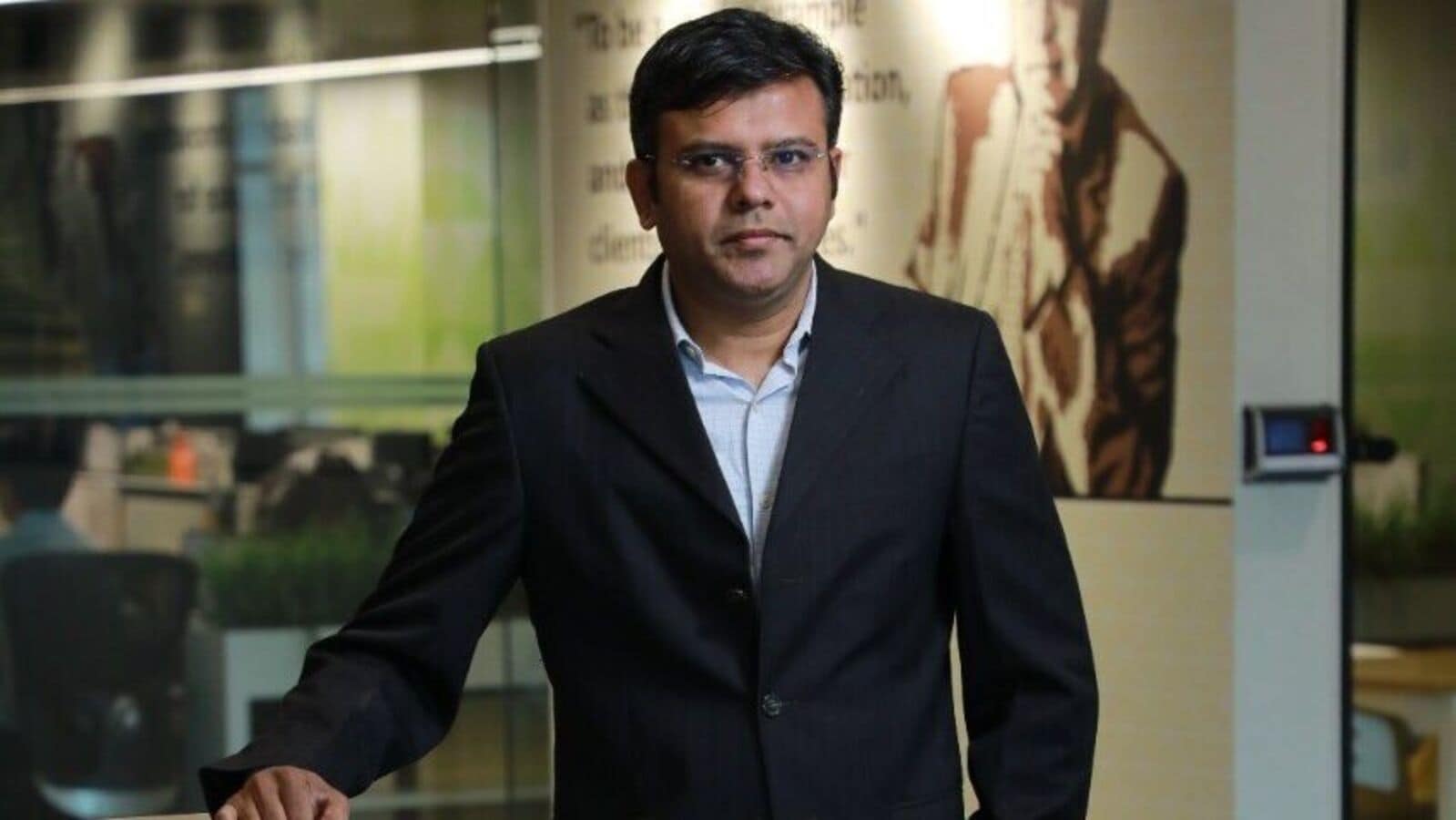[ad_1]
First, let’s try to understand why credit cards can trap you in a spiralling and costly loop of debt.
What causes the debt trap?
Before appreciating how disciplined credit card use can make you rich, you should know the underlying cause of a debt trap. Understand it with this example:
Assume you make ₹1 lakh monthly and have long-term saving goals of ₹30,000. So, you are left with ₹70,000 to spend, of which ₹50,000 is your regular household spend. So, you have a surplus of ₹20,000 that you can splurge.
You can easily have a credit card with a limit of ₹2 to 4 lakhs with that income. Conservatively assuming you have a credit card with a limit of ₹2 lakhs, you spend using a credit card. The card allows you to spend more than ₹20,000 in a month. So, you do and now have a credit card usage of ₹30,000.
|
Month |
Spend with CC |
Used CC Limit |
Amount Repaid to CC |
|
1 |
30,000 |
30,000 |
0 |
|
2 |
30,000 |
60,000 |
30,000 |
|
3 |
30,000 |
60,000 |
30,000 |
|
4 |
30,000 |
60,000 |
20,000 |
|
5 |
30,000 |
70,000 |
20,000 |
|
6 |
30,000 |
80,000 |
20,000 |
|
7 |
30,000 |
90,000 |
20,000 |
|
8 |
30,000 |
1,00,000 |
20,000 |
Table: Spending more than you can repay lands you in trouble with mounting credit card debt.
The credit card offers a maximum free credit period of 50 days. So, you must return ₹30,000 to your card next month. Assuming you have similar spending next month and the same surplus of ₹20,000, you can pay off the credit card and still have a surplus of ₹10,000.
However, what if you again have a splurging spree of ₹30,000 in the third month? In the fourth month, when the time comes to repay the credit card dues, you will find yourself ₹10,000 short. By the fifth month onward, you will start piling up credit card debt and spiralling down the debt trap.
Using credit cards with discipline
What if you use the card within the cash limit? Meaning you spend only as much as the surplus available.
|
Month |
Spend with CC |
CC Limit Used |
Amount Repaid to CC |
|
1 |
30,000 |
30,000 |
0 |
|
2 |
30,000 |
60,000 |
30,000 |
|
3 |
30,000 |
60,000 |
30,000 |
|
4 |
0 |
30,000 |
20,000 |
|
5 |
10,000 |
20,000 |
20,000 |
|
6 |
20,000 |
20,000 |
20,000 |
Table: Spend as much you can repay and stay safe from the debt trap.
You might be thinking, ‘What’s the benefit of having a credit card when spending only as much as I have in my pocket?’ It is a reasonable question. However, the primary benefit of a credit card is not an enhanced spending limit. It is the rewards and discounts on your regular spending.
How do you make money from credit cards?
Using credit cards consciously allows you to earn rewards, avail yourself of discounts, and benefit from regular promotional offers. That means credit cards will help you spend a little less on your regular spending. However, you must choose a credit card that covers most of your regular spending. So, knowing where you spend your money is a critical part of your credit card selection.
For example, if most of your monthly spending includes groceries, fuel, dining, and movies, you can find credit cards offering cashback or rewards on these spends. The rewards ratio can range from 2% to 6% of the total amount spent. So, if your monthly spend on all these heads is ₹1 lakh, you can get a cashback ranging from ₹2000 to 6000.
Usually, we ignore the cashback and discounts we receive on our purchases. All unaccounted savings on the money spent disappear from our income statement. But, if you start accounting for these discounts and cashback with credit cards, you can begin improving your wealth.
How much wealth can credit cards build for you?
First, let’s say you have been spending ₹1 lakh every month. Assuming you cannot use a credit card for certain expenses, you can pay ₹80,000 using a credit card out of the total of ₹1 lakh. Even if you receive a meagre 2% cashback, you get back ₹1600 monthly.
Invest this money at 8% p.a., and in 30 years, you will have a corpus of ₹24 lakhs, assuming your expenses do not rise. But if your expenses rise with an inflation rate of 5% per annum, you will build a corpus of more than ₹36.7 lakhs.
Without a credit card, you’d be paying the entire ₹80,000 in cash, and you would not have any additional savings left. However, credit cards reduce your total outflow with rewards and discounts. The key here is to account for those rewards and not let them disappear with the regular expenses.
How do you account for credit card rewards?
First, you need to understand what transactions are rewarded and which transactions add to the spend, i.e., have markups. You can have credit cards offering cashback or rewards for spending like groceries, fuel, electronics, clothes, movie tickets, flights, hotel bookings, etc.
You also need to understand the difference between rewards and cashback. Rewards are points that will be added to your card as per usage. For example, a card can add 2 points for every ₹100 spent. Cashback directly reduces your total payable amount to the credit card. So it’s easier to track cashback.
Credit card rewards have a conversion rate for turning them into cash benefits. The conversion rate for reward points can range between ₹0.40 to Re 1 per point. Cards with high conversion rates are better, but that’s not the only use of reward points. You can also collect discount coupons and buy merchandise from the rewards catalogue.
Avoid costly transactions
However, be careful with international transactions, as most foreign currency conversions attract a markup fee ranging from 1% to 3.5%. Also, avoid using cash from credit cards, or at least read the terms of use. Most credit cards charge a high rate of interest on cash withdrawals.
Discipline is the key
Our parents have tried to imprint a level of financial discipline since childhood. But in the glittering world of consumerism, discounts, and innovative products, many of us have often lost our way and splurged. And credit cards have been that friend who’d let you go off the track in a super mart.
It is these unplanned moments of spending that eventually lead to the debt trap. And yet, it is also true that you can benefit from the cards as easily with a bit of discipline.
In conclusion, here’s what we believe you should take away from this article:
- Understand your expenses before using a credit card
- Utilise the accelerated reward points on certain expenses
- Get a credit card that covers most of your expenses
- Use a credit card only as much as you can pay off on the next due date
- Account for the rewards and discounts credit cards bring to you
- Avoid transactions with heavy markup fees on credit cards
- Always pay credit card dues on time
Remember, the credit card is just a tool. If you use it the right way, it can make you wealthier. Use it wrong, and it quickly spirals into a pit of costly and rising debt.
Narayn Verma, CEO & Founder of Standard Money
Catch all the Instant Personal Loan, Business Loan, Business News, Money news, Breaking News Events and Latest News Updates on Live Mint. Download The Mint News App to get Daily Market Updates.
MoreLess
[ad_2]
Source link





